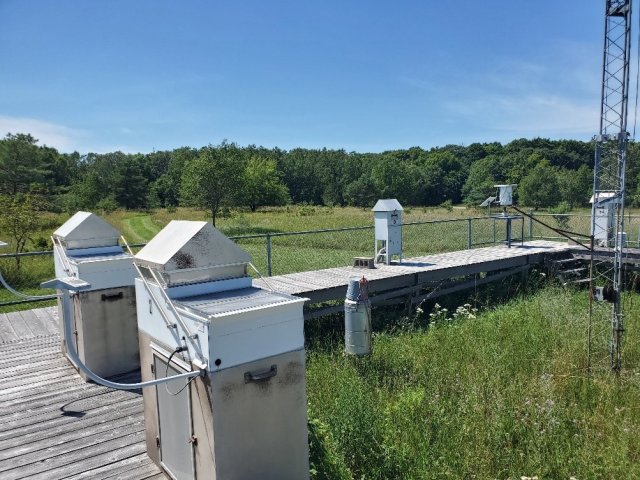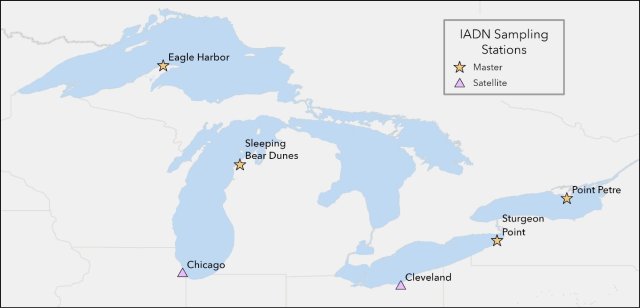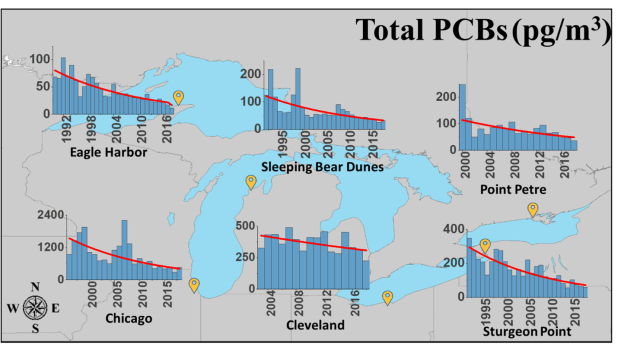Integrated Atmospheric Deposition Network
The Integrated Atmospheric Deposition Network (IADN) was established by the U.S. Environmental Protection Agency (EPA) in 1990 as part of a binational monitoring effort between the United States and Canada to monitor the atmospheric contributions of persistent toxic chemicals to the Great Lakes. Although levels of persistent toxic chemicals in the atmosphere are generally low, the large surface area of the Great Lakes provides an opportunity for significant atmospheric inputs of these chemicals. IADN collects quality-assured vapor, particulate, and precipitation measurements of several different classes of persistent toxic chemicals including polychlorinated biphenyls (PCBs), organochlorine pesticides, polycyclic aromatic hydrocarbons (PAHs), flame retardants, and per- and polyfluoroalkyl substances (PFAS).
Sampling Stations


IADN has monitored persistent toxic chemicals in vapor, particulates, and precipitation at both urban and rural sites across the Great Lakes basin. Master stations are in rural areas on four of the Great Lakes (Eagle Harbor, MI; Sleeping Bear Dunes, MI; Sturgeon Point, NY; Point Petre, ON) to characterize the background basin-wide trends of persistent toxic chemical loadings to the lakes. Satellite stations are in two urban areas (Chicago, IL and Cleveland, OH) to better understand the contribution of large urban areas to persistent toxic chemical loadings to the Great Lakes. All stations are operated by EPA, except for Point Petre which is operated by Environment and Climate Change Canada.
Data and Trends
IADN data can be accessed via the Great Lakes Environmental Database (GLENDA). Overall, the atmospheric deposition of many chemicals monitored by IADN has declined over recent decades. In general, the concentrations of persistent toxic chemicals in atmospheric deposition are higher at urban stations than at rural stations. Read more about trends in atmospheric deposition of persistent toxic chemicals to the Great Lakes in the Toxic Chemicals in the Atmosphere Sub-Indicator Report in the 2022 State of the Great Lakes report.

